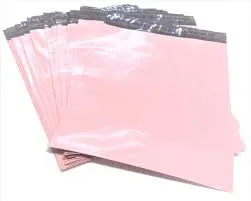stretch rolls
The Versatility of Stretch Rolls in Various Industries
Stretch rolls, commonly known as stretch film or stretch wrap, have become an essential tool in various sectors, thanks to their unparalleled ability to secure and protect products. This remarkable material is manufactured from linear low-density polyethylene (LLDPE) and is characterized by its exceptional elasticity, transparency, and resistance to punctures and tears. As we explore the multifaceted applications of stretch rolls, it is clear that this product is not merely a packaging solution, but a critical component of logistics, warehousing, and manufacturing processes.
Key Features of Stretch Rolls
One of the most prominent features of stretch rolls is their stretchability, which can extend up to 300% or more, making it incredibly adaptable to different shapes and sizes of goods. This elasticity enables the film to conform tightly around packaged products, providing a secure hold that minimizes the risk of movement or damage during transportation. Additionally, the film’s cling properties allow it to adhere to itself without the need for adhesives, making it easy to apply and remove.
Another significant advantage is the clarity of stretch film. Its transparency allows for easy identification of the packaged goods, which is particularly crucial in warehouse settings where quick identification can lead to increased efficiency. Moreover, stretch rolls provide a protective barrier against dust, moisture, and various environmental elements, ensuring that the products remain in pristine condition until they reach their destination.
Applications in Various Sectors
In the retail and manufacturing sectors, stretch rolls play a vital role in securing palletized shipments. Manufacturers often use it to wrap products before they are loaded onto pallets for shipping. This method not only stabilizes the load but also reduces the risk of product loss during transit. In warehouses, stretch film is used extensively for bundling and securing multiple items together for easier handling and storage.
stretch rolls

The food industry also benefits significantly from stretch rolls. They are commonly used for wrapping food products, keeping them fresh and free from contamination. The film is safe for direct food contact, making it an excellent choice for protecting perishables like fruits, vegetables, and meats. Additionally, the ability of stretch film to provide a tight seal helps in prolonging the shelf life of these products, thus minimizing waste.
Moreover, the construction industry utilizes stretch rolls for securing building materials on pallets, ensuring they remain intact during transportation and storage. This application protects valuable materials from environmental damage, enabling projects to stay on schedule without costly delays caused by damaged supplies.
Environmental Considerations
With the growing awareness of environmental issues, manufacturers have recognized the importance of sustainability in the production of stretch films. Many companies are now developing stretch rolls made from recycled materials or focusing on creating biodegradable options. This shift not only meets the demand for eco-friendly products but also helps in reducing the overall carbon footprint associated with packaging materials.
Conclusion
In conclusion, stretch rolls are a vital tool that transcends beyond mere packaging. Their versatility, strength, and protective qualities make them invaluable in various industries, including retail, manufacturing, food, and construction. As the demand for efficient and environmentally friendly packaging solutions grows, it is likely that innovations in stretch film technology will continue to evolve, further enhancing their effectiveness and minimizing their environmental impact. Whether securing a shipment or preserving the freshness of a food product, stretch rolls will undoubtedly remain an essential part of modern logistics and packaging solutions.
-
The Best Uses for Small Trash Bags in Daily LifeNewsJul.01,2025
-
Stylish Reusable Grocery Bags TrendsNewsJul.01,2025
-
Shipping Advantages of Using Bubble Envelopes BulkNewsJul.01,2025
-
How Compostable Mailing Bags Reduce Environmental ImpactNewsJul.01,2025
-
Environmentally - Friendly Bulk Poly MailersNewsJul.01,2025
-
Eco Friendly Custom Laminated Tote BagsNewsJul.01,2025
-
Have the freedom of customizing your custom mailers any way you want! Our dedicated packaging support will help deliver you the mailing experience you need to elevate your shipping experience to the next level! Start making a strong impression on your customers and stand out from your competitors! -
LIYA uses high quality raw materials which directly purchased from large enterprises domestic and overseas such as PetroChina, Sinopec, Sabic, Equate, ExxonMobil, Dow Chemical, Total, and Borouge, ensuring the price advantage and quality of the raw materials. -
LIYA uses high quality raw materials which directly purchased from large enterprises domestic and overseas such as PetroChina, Sinopec, Sabic, Equate, ExxonMobil, Dow Chemical, Total, and Borouge, ensuring the price advantage and quality of the raw materials.





